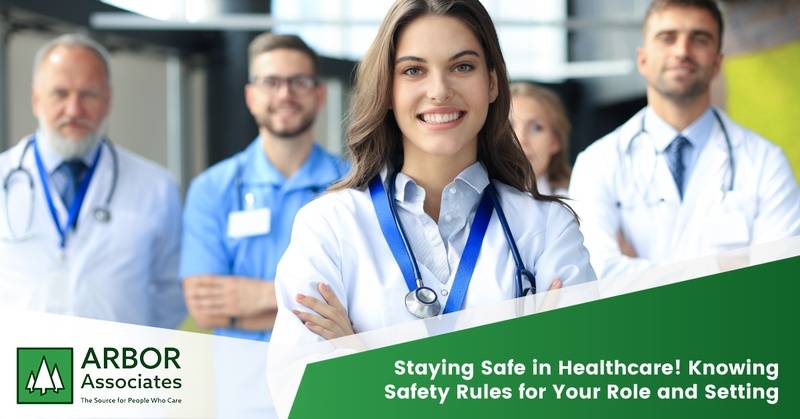Do you know health care employees experience the highest rate of occupational injuries and illnesses? Whether you work directly with patients or in support roles, you may be vulnerable to risk.
It’s best to familiarize yourself with the safety guidelines before beginning an assignment.
Important Safety Guidelines for any Setting
- Use good body mechanics, assistive devices, and coworkers to reduce the chance of injury. In that vein, make sure you’re familiar with the equipment available and don’t try to use something you don’t know how to use. If no equipment is available, go back to the basics and practice appropriate body mechanics while enlisting the assistance of your coworkers.
- It’s critical to grasp the fire safety and prevention guidelines when visiting a new location. For instance, review a fire safety acronym (a common one is RACE) and be sure you know where exits and extinguishers are.
- According to the CDC, occupational exposure to bloodborne diseases from needlesticks and other sharps injuries is serious. Sharp injuries are connected to over 20 different illnesses, including Hepatitis and HIV. Practice safe handling to avoid these injuries. Each facility should have processes in place to protect workers.
- For any patient care, practice standard precautions. Even though you should know the basic procedures, it’s important to be familiar with PPE locations and infection control practices at each facility.
- Safety precautions for yourself and your clients can vary from facility to floor or wing within a facility. An example of this would be a Dementia or Alzheimer’s ward where access and behavioral challenges can present themselves. Make sure you’re aware of safety needs and requirements during your shift.
Facilities that May Require Specialized Safety Training
The following facilities may necessitate specialized safety training. Your recruiter will only place you in roles you’re qualified for, but it’s helpful to keep in mind:
- Mental and behavioral health facilities: De-escalation training is usually required, in addition to knowing the specific needs of each individual.
- Group homes: Individual group homes may have “House Specific” rules you should understand before starting a new assignment.
- Shelters: Make sure you’re aware of protocols for infectious disease control, disaster situations, food handling, and de-escalation procedures.
- Residential schools: Before a shift, review the school’s health and safety policy.
As a health care worker, your job is to protect others; but it’s important to make sure you stay safe and healthy too. With these tips, you’ll be ahead of the game when it comes to safety!
Arbor Associates is committed to finding a safe work environment for all health care employees. Visit our website today and reach out to a recruiter to learn about available positions!


